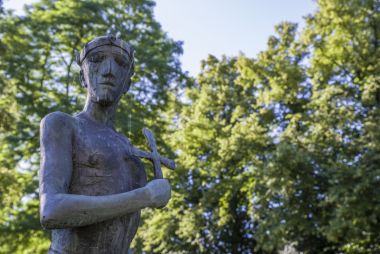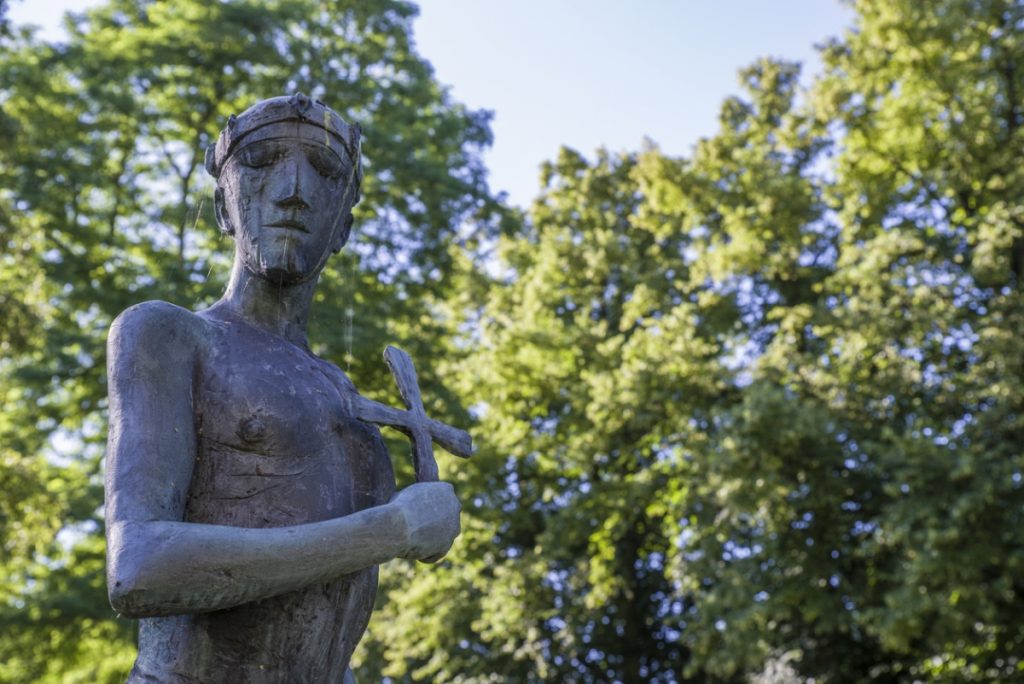
April twenty third is St. George's Day, however St. George wasn't the unique patron saint of England, so who was? It is a story…
The unique patron saint of England
Saint George was recognized in Anglo-Saxon England and was talked about by the Venerable Bede. Some Saxon church buildings had been additionally devoted to St. George, however St. George was not the unique patron of England.
King Edmund
The unique patron saint of England was truly Saint Edmund, additionally referred to as Edmund the Martyr, or St. Edmund the King and Martyr who was the king of East Anglia within the ninth century. What we find out about him comes primarily from the Anglo-Saxon Chronicle and from the later writings of a French monk referred to as Abbo of Fleury. Based on Abba, its supply was Saint Dunstan, Archbishop of Canterbury, who heard the story from an outdated man who was Edmund's sword bearer.
East Anglia
Earlier than England was unified within the tenth century, it was a mosaic of kingdoms of the Germanic tribes of the Angles and Saxons. The East Anglians shaped the Kingdom of East Anglia, which was the easternmost a part of southern England. This included the North People (now referred to as Norfolk) and the South People (now referred to as Suffolk). Even at this time this space continues to be referred to as East Anglia.
Born in 840 or 841, Edmund ascended the throne of East Anglia in 854 or 855, following the demise of his father, King Æthelweard. Edmund was solely fifteen years outdated when he was topped on Christmas Day by Humbert, Bishop of Elmham.
Martyr
King Edmund was a Christian who is claimed to have memorized your entire psalter. In 869, he fought alongside King Alfred of Wessex towards the Viking and Norse invaders, which the Anglo-Saxon Chronicle known as the Nice Pagan Military.
When his forces had been defeated, Edmund was captured close to Thetford by Ivar Ragnarsson, which interprets as Ivar the Boneless. Edmund was ordered to resign his religion and share energy with the pagan Vikings, however he refused.
He was killed by the Danes on November 20, 869 after refusing to resign Christianity. The story goes that after being tied to a tree and shot with full arrows, he was beheaded. He was then succeeded as King of East Anglia by King Oswald
Edmund's tomb
Based on the abbot of Fleury, Edmund died at Haegelisdun, which was near the place he was killed. It’s not recognized for sure the place it’s, however one idea says it could possibly be trendy Hellesdon in Norfolk and one other idea says it’s Hailesdon close to Maldon in Essex. One other custom is that it’s Hoxne in Suffolk, the place there’s a monument which claims to mark the spot of his demise. He was then buried close by in a picket chapel at a spot referred to as Suthtuna, which is Sutton in trendy English, although once more nobody is sort of positive which Sutton.
Bury St Edmunds
In 902 Edmund's stays had been taken to Beodericsworth in Suffolk. In 925 King Athelstan based a non secular neighborhood to take care of Edmund's shrine. After King Canute grew to become a Christian, he ordered a brand new stone abbey to be constructed on the positioning, which was accomplished in 1032. St Edmunds Abbey grew to become one in every of England's main pilgrimage websites. Pilgrims from throughout Europe got here to the abbey and the city continues to be referred to as Bury St Edmunds.
Patron Saint of England
England had numerous saints who had been thought-about patron saints, however the primary one was St. Edmund. Banner of St. Edmund was carried into battle by the English military properly into the Center Ages. Nonetheless, within the time of King Edward I, on the finish of the thirteenth century, his banner was joined by the banner of St. George with a purple cross.
St George demoted
In 1346, St George was instrumental in serving to England win the Battle of Crécy in France. In 1348, the English king Edward III created a brand new order of chivalry referred to as the Noble Order of the Garter, which nonetheless exists at this time. King Edward III made St. George the patron saint of the order and likewise proclaimed him the patron saint of England instead of St. Edmund. After this time the cross of St. George grew to become related to England and was later adopted as its flag.
St. Edmund's Day
Edmund's shrine was destroyed in 1539 through the demolition of the monasteries. St Edmund is a saint within the Catholic Church and can be commemorated within the Church of England.
There are numerous church buildings devoted to Saint Edmund. Essentially the most well-known might be St Edmund the King and Martyr's Church on Lombard Avenue in London. The unique burned down within the Nice Fireplace of London and the present one was designed by Sir Christopher Wren and accomplished in 1679.
Historically, saints' days are commemorated on the day they died, quite than the day they had been born (which is much less prone to be recognized), and so St Edmund's Day falls on 20 November, the date of his martyrdom. The gathering for St. Edmund's Day is “Everlasting God, whose servant Edmund saved the religion to the top, with thee and his individuals, and glorified thee by his demise: grant us such steadfastness of religion, that with a noble military of martyrs, we might benefit from the fullness of life resurrection by means of Jesus Christ, your Son, our Lord, who lives and reigns with you, within the unity of the Holy Spirit, one God, now and perpetually.
